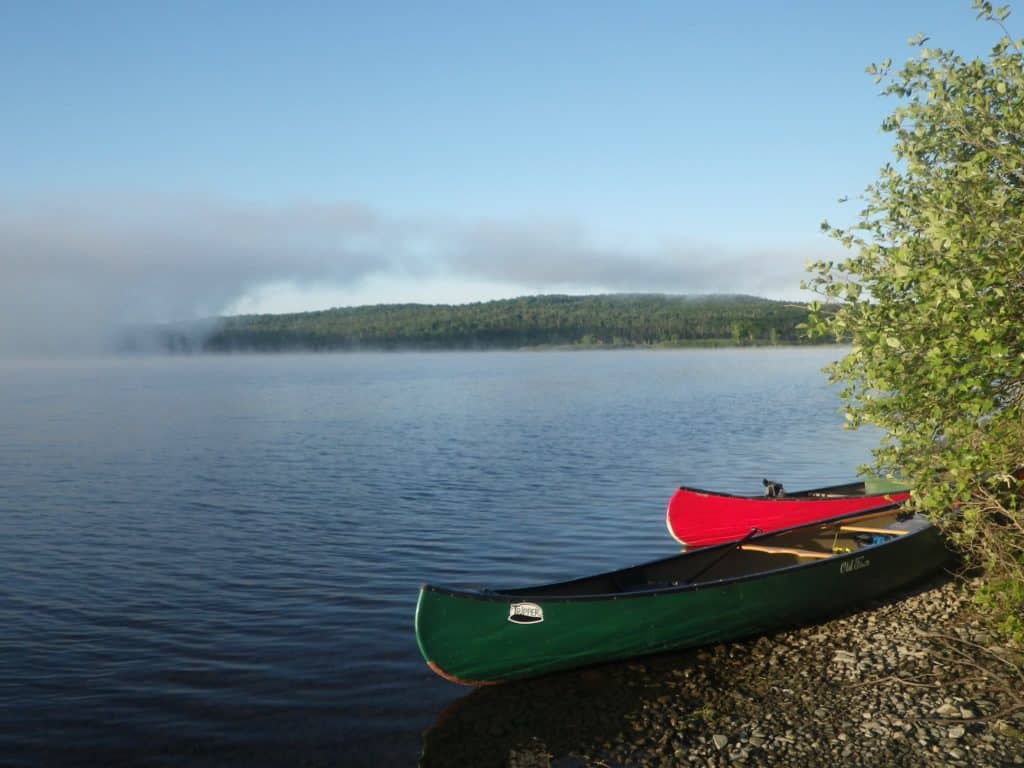
Slosh, slosh, slosh.
As I lay on my back in a tiny backpacking tent just steps away from the gently flowing Allagash River, I could hear a steady sloshing. At first, the rhythmic sound made me think of my grandchildren and the sounds they make as they splash through springtime puddles in their wellies, on one of our many laughter-filled pandemic outings at Gilsland Farm.
But this was different. Quite different. I was just steps away from the shore of the thoroughfare between Umsaskis Lake and Long Lake on the Allagash Wilderness Waterway. It was about 9 p.m. and I had just clicked off my headlamp after finishing the day’s entry in my trip journal. I peered out of my tent into the settling darkness and saw an imposing bull moose approaching our campsite.
Slosh, slosh, slosh. Then two tremendous belches that would have embarrassed a lumberjack.
The sounds intensified and the sloshing became hooves on solid ground; the moose had come ashore, made his way past our canoes, and was now heading directly for my gossamer tent. He stopped short and began grazing on the dogwood that stood directly behind my head. I coughed gently, wanting to make sure that he knew I was just feet away.
Hours later, I awoke, hearing coyotes in the distance. After a long day’s paddle, I had managed to fall asleep in the middle of the moose’s dinner.
This was my third trip on the Allagash. Every trip is unique, but the constant is one’s realization that humans are the novelty in this space; we had not seen other paddlers in three days.
During the second week of June, the transition between day and night is cacophonous in the Allagash. At the intersection of diurnal and nocturnal species, Common Mergansers and Canada Geese fly noisily along the waterway as they seek out the perfect place to spend the night. A Ruffed Grouse makes a last ditch effort to attract a mate in the woods by drumming from a stump. Wilson’s Snipes are also looking for mates with a winnowing sound through their tail feathers. Two Barred Owls call from opposite sides of the thoroughfare to inquire “who cooks for you?” Bull Frogs are the percussionists in this sonic salad and from the nearby marsh, an American Bittern accompanies with its deep pump handle call.
In this setting, humans are an uninvited audience. The experience is humbling. For anyone who treasures Maine’s distinctive habitat and its abundant and diverse wildlife, this is a visceral reminder of what makes our state so exhilaratingly special. As the Executive Director of an organization dedicated to conserving Maine’s wildlife and habitat, it’s also a powerful reminder to me of the importance of our work—as well as the imperatives that lie ahead. This is our watch. Species like Maine’s loons, brook trout, moose, and Canada lynx need our northern climate and accompanying healthy ecosystems to remain viable. With climate change and other challenges, we know that we cannot take them for granted. If we don’t act and advocate on their behalf, these icons of the North Woods may disappear before we know it.
Thank you for all that you do to join and support us in our work. My recent Allagash experience reinforces and validates our work together: when we set our collective sights on improving our wildlife and habitat, incredible accomplishments are made. When my boot-sloshing grandchildren grow up, I want them to be as awestruck by their own Allagash experience as I am in 2021. Our collective good work will ensure they have that opportunity, and your future generations will too.
There is a majestic bull moose on the Allagash that doesn’t have a clue what you are doing for him, but his offspring will be paying your offspring a nighttime visit that they’ll remember for the rest of their lives.
